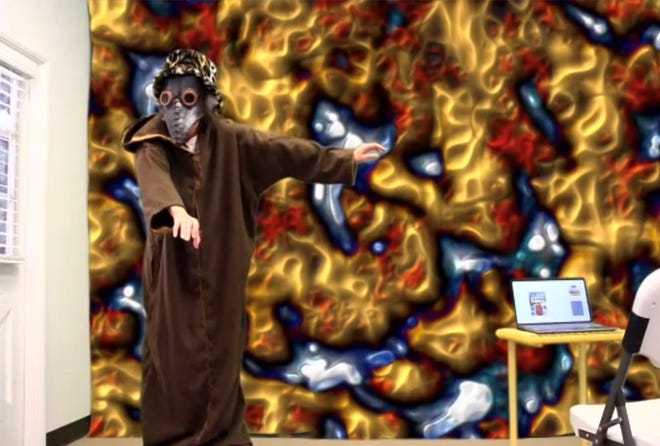
Is artistic expression a viable way to deal with mental challenges? Judging by the convincing work of Bezerk Productionsthe answer is a definite “yes”.
Linda Sibiothe local artist who launched the non-profit art collective, known as “Broken Eggs” — in 2001, has worked in various media, including painting, installation, and performance art since the mid-1980s. The intent behind Bezerk is twofold: to raise awareness of interdisciplinary art for people with disabilities severe mental illness and also provide unique arts and career educational opportunities for that typically underserved population.
“I noticed I had schizophrenia when I worked on Skid Row,” says Sibio, who has since identified himself as a “schizophrenic artist.” After forming a group called Operation Hammer, she was encouraged to “come out” and tell people that she had schizophrenia because she would allow other people with the condition to do the same.
“I did that publicly in 1991, and I’ve been dealing with those issues ever since,” he says, pointing to the stigma against people who are schizophrenic and have other mental health issues. Over the years, Sibio has found his own support group of artists, administrators, and others who appreciate and value his work.

“They give me advice and when I’m down they talk to me and encourage me to keep working to do my job as well as possible,” she says. “So for people with mental issues trying to break into the art world, every person they meet could be a potential support. It’s important to nurture those relationships, and I try to help people with that.”
According to the National Alliance on Mental Health, 1 percent of American adults experienced a mental illness in 2020. That’s 52.9 million people or one in five adults. Furthermore, one in 20 American adults experiences a serious mental illness each year, and 50 percent of all lifetime mental illnesses begin by age 14, 75 percent by age 24.
Bezerk Productions recently received a grant from Inland Empire Community Foundation. The funds helped Sibio prepare for a presentation on a recent Zoom program hosted by Franklin Furnace, an organization that provides artists with physical and virtual venues to display their “time-based art.”
Sibio’s segment, which was derived from one of his larger pieces called “Wall Street Guillotine,” revolved around the plight of today’s youth, particularly gun violence.
“We were able to share what we’re doing through the vehicle of performance in writing and visual art with a national community of artists,” Sibio says of the grant. “People from all over the country attended, especially those with mental health issues. The grant helped us get off the ground because some of the money we get from the Mental Health Services Act doesn’t really cover that kind of activity.”

Video documentation and questions and answers for the paper, called “Connections,” are available from the Franklin Furnace archive (franklinfurnace.org/cracked-eggs).
In general, Bezerk Productions has seen progress with its own networking program.
“Artists can write us a letter or an email, and we’ll do what we can to help them,” says Sibio, adding that even helping with an artist’s basic needs, like art supplies, or helping him get a show at a trusted place gallery, seeps into the mix.
Sibio has long been interested in the “fringe” of society and how that affects the culture as a whole. She shows a rare depth in her artwork, leaning heavily into social issues, from mental illness, homelessness and gangs. to suicide, drug addiction, mass murder and prostitution, with “progressive elements in design and form, thus creating my own language of subculture”.
Of his “condition”, he says he appreciates the grace he has experienced over the years.
“I grew up in an orphanage and had a very difficult childhood,” admits Sibio. Expressing myself helps me to get in touch with my roots, but also to purge my roots and deal with the trauma in a positive way, get it out of my body by catharsis, so that when I make art, I can focus better. I create these very detailed paintings, and they can take a year to do. I can focus like no one else when that environmental crap is removed from my diagnosis.
“Many times, people who have diseases grew up in very bad environments,” he stresses. “But it’s not the illness that’s really giving them the problem, because schizophrenia has good attributes: it can make you more creative and stuff like that. People who have mental illnesses can come from these ‘bad’ backgrounds, so it can be beneficial to get rid of that ‘environmental stuff.’ Hopefully the work I do helps raise awareness of that.”
Learn more about Linda Sibio and Bezerk Productions at crazyforaday.com/linda-sibio.
The Inland Empire Community Foundation works to strengthen Inland Southern California through philanthropy. Learn more at iegives.org.
